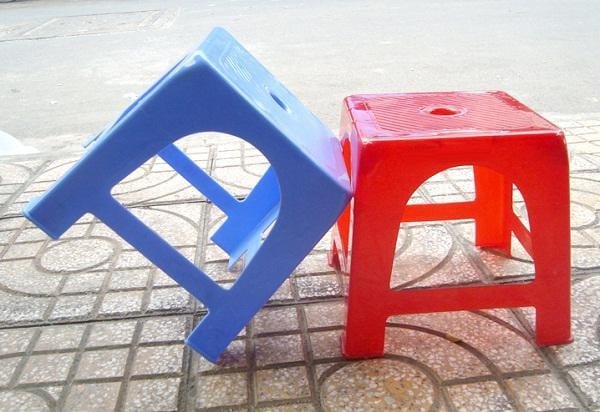Plastic chairs are a familiar product used by many Vietnamese people, yet few know precisely why there’s a small hole on the surface of plastic chairs. This simple question has various answers, and after hearing them, you’ll surely find it intriguing.
The function of the small hole on the chair?
When stacking these plastic chairs on top of each other, without this small hole, you’ll encounter numerous difficulties in storing and transporting them.

If you remember the Magdeburg hemispheres experiment in physics learned in high school, you’ll know that the vacuum environment inside requires a strong force to separate the hemispheres.
Although the space between two chairs isn’t a vacuum, without this hole, there’s no space between them, creating a similar effect, making them stick together, requiring a strong force to separate.
Moreover, when stacking chairs, this hole allows them to fit snugly and securely.
So, we partly understand the purpose of this small hole. However, the question remains: why is it a round hole, not larger or smaller, and why a circle, not a square or a triangle?
Using square or triangular holes wouldn’t be good because their sharp angles tend to concentrate pressure at the corners, making them prone to breakage when someone sits on the chair.
Additionally, oval or other rounded shapes aren’t chosen because a round shape is the easiest to mold, hence the preference for a round hole in plastic chairs.
But why only one hole and not two or more? For ventilation purposes, one hole is sufficient.
Why isn’t the hole too large or too small? If too large, it would impact the structural strength; if too small, users would struggle to grip the chair by inserting their fingers.
Moreover, there are many other scientific and interesting explanations about this small hole. Some theories suggest its relation to the plastic molding process, where the use of hot molten plastic in the molding process causes expansion when hot and contraction when cooled. The created void helps minimize the plastic used. Furthermore, having such a hole makes it easier to remove the chair from the mold.
Another explanation suggests that if chairs are stacked, something can be threaded through the hole to move the stack easily. Or, if a chair gets wet, this hole helps it dry quickly without water pooling.
Other functions of the round hole in the chair
Aeration
Whether you’re sitting on a sofa or a bench, prolonged sitting might cause discomfort, especially in hot weather, resulting in a sweaty bottom. The small hole in the center of the chair aids in ventilation, preventing discomfort during extended periods of sitting.
Posture Correction
When doing homework at home, children might sit improperly if not reminded. This is where the hole in the middle of the chair comes in handy. By inserting a stick through the child’s clothes and then through the hole in the chair, it helps in fixing the child’s posture. With this support, the child won’t slouch even after sitting for a long time, preventing a hunched back.












